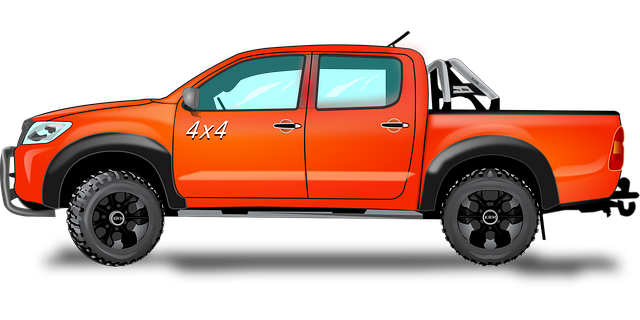ABS (Anti-lock Braking System) sensors, strategically placed on each wheel of modern vehicles, are vital for enhancing safety and control during sudden stops or on slippery roads. In rugged terrain with overland 4×4 accessories, ABS prevents wheel lockup by pulsing brakes gently, improving braking performance and handling. These sensors monitor rotational speed and brake pedal force, ensuring drivers maintain control on challenging surfaces. Proper installation, regular maintenance, and troubleshooting are crucial for optimal ABS function in recreational vehicles (RGVs) with off-road 4×4 accessories.
ABS (Anti-lock Braking System) sensors are essential components in modern vehicles, especially overland 4×4 accessories for RV owners. This advanced technology prevents wheels from locking up during braking, enhancing control and safety on unpredictable terrains. In this article, we’ll guide you through the fundamentals of ABS sensors, their significance in overland 4×4 vehicles, different sensor types, installation tips tailored to Recreational Vehicle (RGV) owners, common issues, and practical troubleshooting techniques for a smoother off-road experience with your RGV.
- Understanding ABS Sensors: A Basic Overview
- The Role of ABS in Overland 4×4 Vehicles
- Types of ABS Sensors and Their Functions
- Installation and Maintenance Tips for RGV (Recreational Vehicle) Owners
- Common Issues and Troubleshooting Techniques
Understanding ABS Sensors: A Basic Overview

ABS (Anti-lock Braking System) sensors are critical components in modern vehicles, designed to enhance safety and control during sudden stops or slippery road conditions. These sensors monitor wheel speed, providing real-time data to the vehicle’s computer system. In the case of an emergency stop, ABS sensors detect when a wheel is locking up and activate measures to prevent skidding by pulsing the brakes gently. This innovative technology significantly improves braking performance in challenging overland 4×4-accessories-rgv environments where terrain can be unpredictable.
Each wheel on a vehicle is equipped with one or more ABS sensors, strategically placed to ensure optimal coverage. When a driver applies the brakes, these sensors continuously transmit information about rotational speed. If a sensor detects that a particular wheel is rotating slower than the others, indicating it’s at risk of locking, the ABS system intervenes. By modulating brake pressure, the ABS prevents wheels from locking up, allowing for better control and traction during emergency stops, especially when traversing rugged landscapes with off-road 4×4 accessories.
The Role of ABS in Overland 4×4 Vehicles

ABS (Anti-lock Braking System) plays a pivotal role in enhancing braking performance and safety for overland 4×4 vehicles. In rugged terrain, where wheel lockup can occur frequently due to uneven surfaces or sudden stops, ABS prevents wheels from locking up, ensuring drivers maintain control. This is especially crucial for off-road adventures, as it allows for precise steering and improved traction when navigating through challenging conditions.
Overland 4×4 enthusiasts often rely on ABS sensors and systems as essential overland 4×4 accessories RGV (Remote Global Vehicle). These sensors provide real-time data to the vehicle’s computer, enabling rapid adjustments to braking pressure. This technology not only enhances stopping power but also contributes to better overall handling, making it safer for drivers to conquer diverse terrains with confidence.
Types of ABS Sensors and Their Functions

ABS sensors, or Anti-lock Braking System sensors, are critical components in modern vehicles’ braking systems, ensuring optimal performance and safety on the road. These sensors come in various types, each with a specific function tailored to different driving needs, especially for those who enjoy off-road adventures with their overland 4×4-accessories-rgv.
One common type is the wheel speed sensor, which monitors the rotational speed of each wheel. It sends this data to the vehicle’s computer, enabling it to detect if a wheel is locking up during hard braking or when traversing challenging terrain. Another vital sensor is the pedal position sensor, measuring the force applied to the brake pedal, which helps regulate pressure and prevent wheel lockup. For rugged 4×4 enthusiasts, understanding these sensors’ roles is essential for maintaining control and stability on varied surfaces.
Installation and Maintenance Tips for RGV (Recreational Vehicle) Owners

When installing ABS sensors in your recreational vehicle (RGV), it’s crucial to follow best practices for optimal performance and safety. Start by ensuring proper alignment and secure connections. Use high-quality overhead mountings designed for rugged off-road conditions, especially if you plan on exploring challenging terrains with your overland 4×4-accessories-rgv. Regular maintenance is equally vital. Clean the sensors regularly to prevent dust or debris buildup, which can disrupt signal accuracy. Check for any signs of damage or wear and replace components as needed.
Remember that ABS sensors play a critical role in enhancing braking efficiency and safety on uneven surfaces. Regular upkeep ensures these sensors function optimally during your adventurous overland trips. Keep an eye on any anomalies, such as strange noises or reduced braking effectiveness, which may indicate sensor malfunction and necessitate professional attention.
Common Issues and Troubleshooting Techniques

ABS sensors, like any other component, can develop issues over time, especially in demanding off-road environments where overland 4×4-accessories-rpg are frequently used. Common problems include sensor fault codes, decreased system performance, and even total sensor failure. Often, these issues manifest as reduced braking efficiency or unusual noises during braking.
Troubleshooting techniques for ABS sensors involve a systematic approach. Check the sensor’s power supply and wiring for any signs of damage or loose connections. Verify that the sensor is receiving the correct voltage and ground connection. If the issue persists, use diagnostic tools to scan for error codes, which can provide valuable insights into the problem. In some cases, replacing the sensor might be necessary, especially if it’s worn out or damaged beyond repair.
ABS sensors play a pivotal role in modern vehicle safety, especially in challenging terrain like overlands. For RV owners navigating rugged landscapes with their overland 4×4 accessories, understanding these sensors and their functions is key to ensuring optimal performance and preventing common issues. By implementing proper installation and maintenance practices, you can maximize the benefits of ABS technology, enhancing both control and safety during your off-road adventures.



